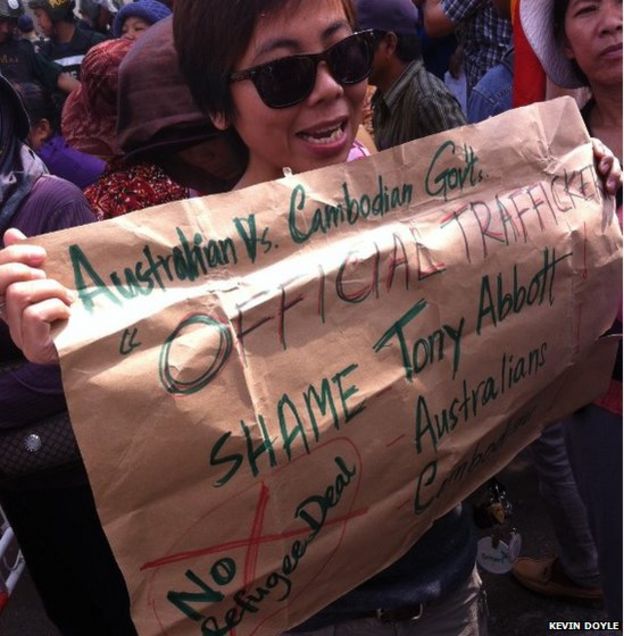 |
| Farmer Ratanak smokes cannabis from a bamboo water pipe at a village in Battambang province. Bennett Murray |
Cambodia has a complicated relationship with cannabis. While it’s technically illegal, the authorities make exceptions for traditional and medicinal use. But now with a global trend away from prohibition, some suggest it’s high time the government here followed suit
As farmers across Cambodia take to their fields this month in anticipation of the rainy season, in a sleepy village in Battambang’s Moung Ruessei district, some are sowing a crop alongside their rice and cassava that’s just as traditional but much more controversial.
“Here, ganja is just like in Jamaica,” said Ratanak*, a 42-year-old farmer, after inhaling a lungful of thick, pungent cannabis smoke from a bamboo water pipe.
“Because we don’t grow much — maybe 10 to 15 plants — [the authorities] let us grow it,” he said, adding that police had never requested bribes from him over his activities.
Vireak*, a cassava farmer in his fifties, said that he had smoked marijuana daily since settling in the area after the civil strife of the mid-90s ended.
While he maintained a few plants in his personal vegetable garden year round, he and his neighbours planned to plant most of the annual crop in the Cardamom Mountains – one of the Kingdom’s epicentres of illicit cannabis production.
“In the night time in the mountains, with the dew, it helps the plant grow a lot of buds,” Vireak said.
Cambodia has a complicated relationship with cannabis – which is believed to have been cultivated and used for medicinal, culinary and recreational purposes here for hundreds of years – and amid global moves away from prohibition of the drug, there are suggestions that the government should follow suit.
On paper, it’s still illegal – in accordance with the Single Convention on Narcotics treaty passed in 1961 – and in recent weeks, police have busted at least four large-scale marijuana growing operations, including almost 8,000 plants discovered amid a sesame crop in Pursat.
But in Kandal province’s Kien Svay district this month, when police discovered a crop hidden in a 48-year-old woman’s papaya fruit patch, they let her off with a warning when she claimed she was HIV-positive and was using the drug for medicinal purposes.
And, of course, in Phnom Penh, dealers freely hawk marijuana on the riverside, while restaurants advertise weed-infused “happy” pizzas as they have for decades.

























